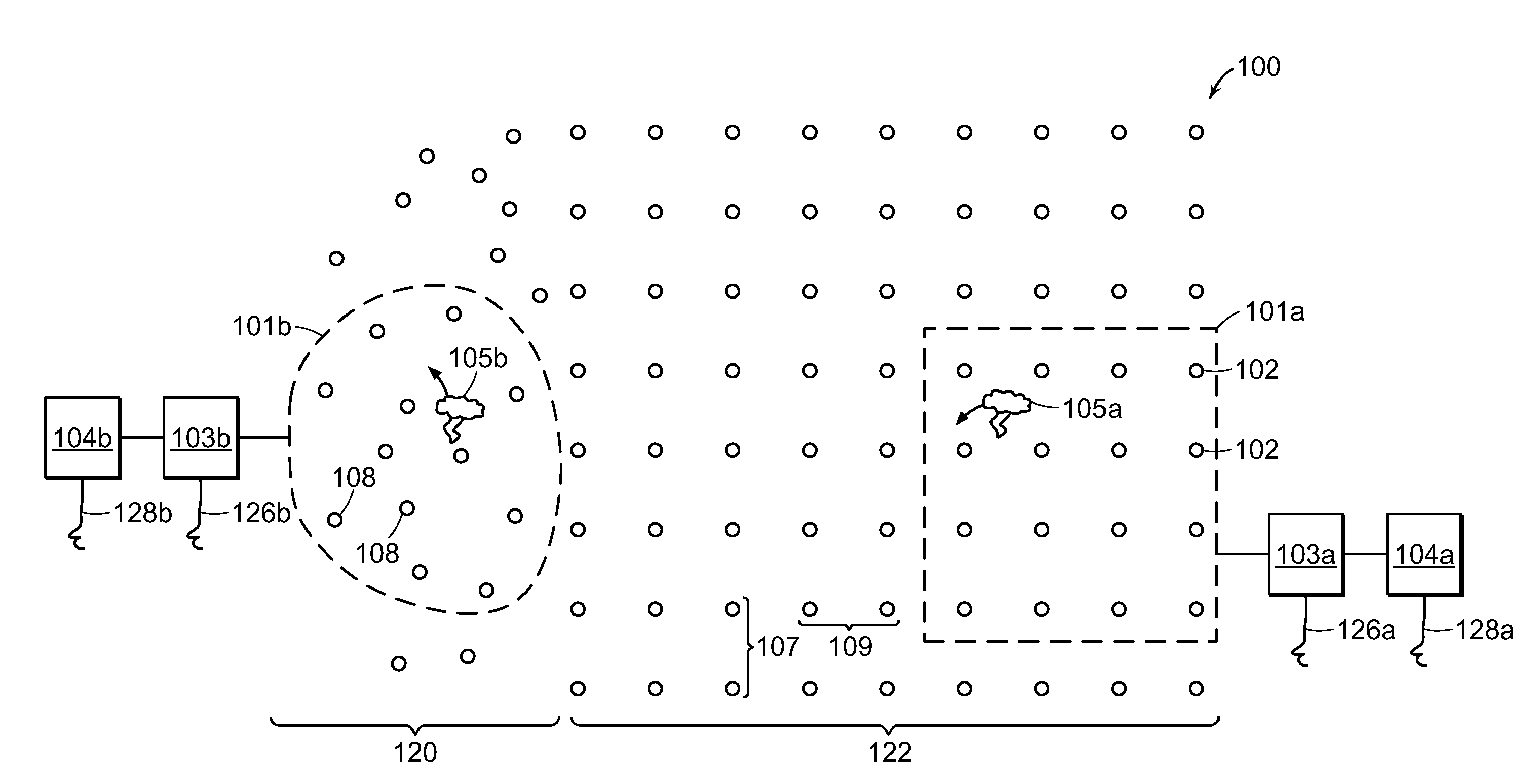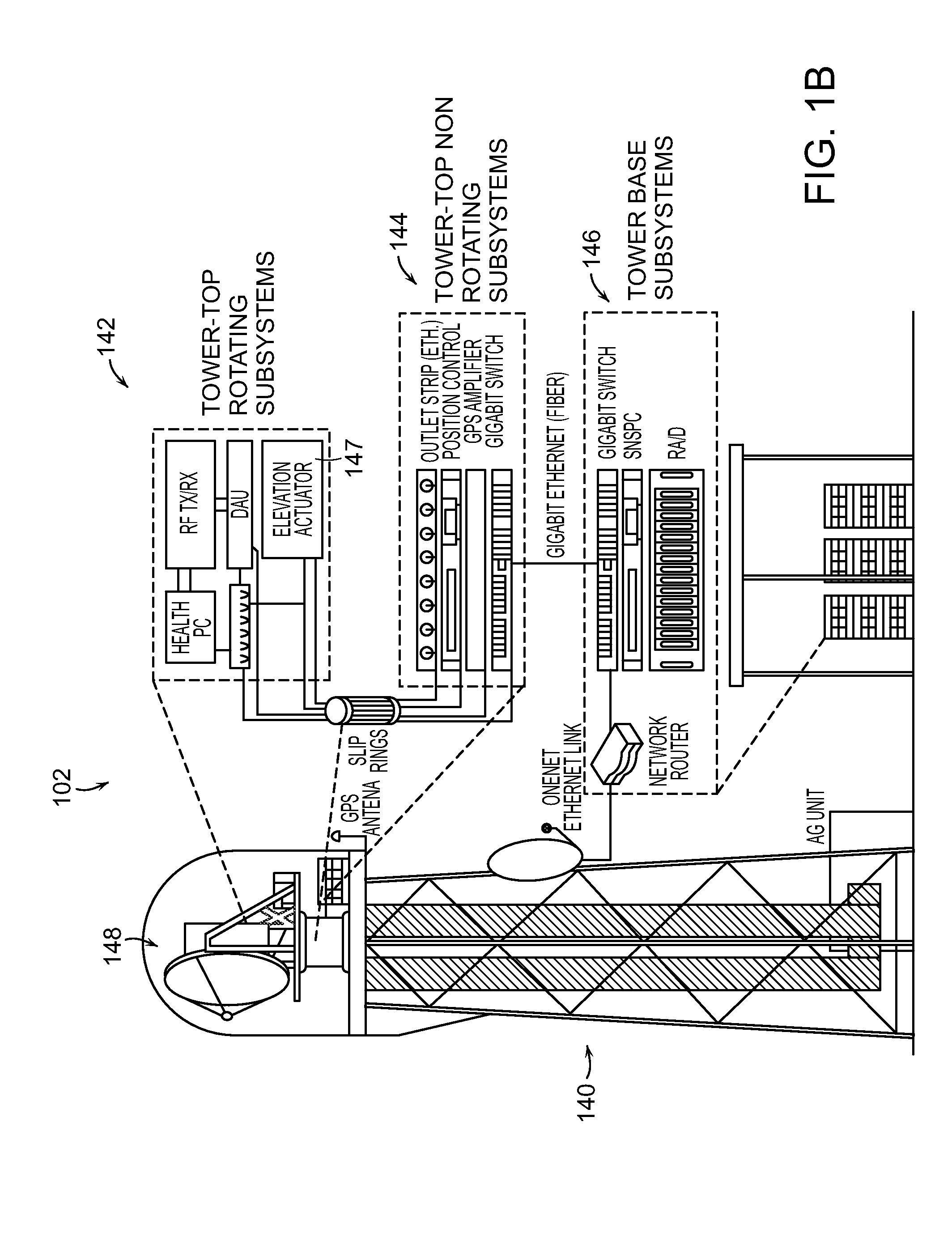[0006]Prior studies demonstrate the added value and importance of high-quality and high-resolution vector velocity
field data for making improvements in the skill of numerical weather models to predict
severe weather phenomena. In addition to provision of velocity estimates, it is desired to have a metric to gauge the quality of the estimates. This metric can be used to classify data, so that
numerical weather prediction class of CASA end-users can be informed about the derived velocity data's quality. Further, estimates of the velocity
data quality can aid in the planning of radar scanning strategies for the next observing period or scan interval. CASA's scanning strategy is to scan when and where end-
user needs are greatest. The current design deployed in the IP1
system allows end-users to define their needs in terms of what to scan and how to scan it.
Feature detection algorithms, continuously running on streamed data, report what weather objects are detected. Based on this information, end-user rules define the frequency and the regions for future scans.
[0007]Thus, the present invention is utilized in the process of selecting the observing radars performing the observation, which is largely determined by a function maximizing the number of objects that the system is able to scan during a predetermined
heartbeat interval, currently set to one minute for many scanning operations. In the case of velocity retrievals, in addition to the previous steps, two or more radars are chosen in such a way as to provide a geometrically efficient dual-Doppler retrieval and scan coordination to satisfy sufficient coincident temporal sampling. However, a geometrically efficient dual-Doppler retrieval does not necessarily provide the most accurate network based velocity measurements. Use of quality
metrics from previous scans can be used to compare the quality of competing scans; hence, increasing the utilization of system resources.
[0008]One of the CASA user groups are the emergency managers whose responsibility is to issue public warnings about the weather related emergencies and hazards. Some of CASA's data outputs, such as
reflectivity and
radial velocity, are streamed directly to emergency managers to assist in their
decision making process. Currently, emergency managers foremost desire is the output of base
reflectivity, valuing its utility to be 68% of the whole. The composite
reflectivity was valued at 20% and then
radial velocity at 5%. Because weather related emergencies and hazards are usually manifested with strong velocity signatures, a low appreciation of velocity fields by end-users is surprising. One possible explanation for the underutilization of velocity data is that it is one-dimensional and presented in polar coordinates, which requires additional skills to interpret. If true, improvements in the display of vector velocity fields to emergency managers will be better utilized, and the use of CASA velocity data will be increased.
[0009]Thus the present invention provides real-time vector
velocity measurement and display, which delivered along with quality
metrics, assist in a better understanding of the
radar network performance and help maximize the utilization of limited network resources. While existing techniques can be used to provide vector velocity, they are limited in that they do not provide velocity measurements in real time, i.e. within the short scan interval time needed to quickly adjust to changing conditions, nor do they provide quality
metrics or are not configured or scalable for distributed networks of small
radar systems. The present invention provides a operational real-time solution for the
estimation of vector velocity and other related products in
radar network (e.g. CASA's Integrative Project One system—IP1) which is flexible and scalable to address other
radar network configurations, not yet in existence.
[0010]A preferred embodiment includes a network of velocity processors, each processor associated with a different plurality of radar nodes to provide for the selection of different networked
processing combinations for improved resolution and scaling. A
network control system allocates the use of this velocity processor network to provide networked three dimensional (3D) velocity measurements. The velocity processors operate in real time, i.e. they compute velocity values within the scan intervals or
heartbeat at which the radar nodes operate and quantitatively characteristize the resulting velocity data using metrics to indicate for the
end user the quality of the measurement being made. The system uses a geo-centric
spherical coordinate system to improve computational efficiency and speed. The quality metric can be defined in terms of the
signal to
noise ratio (SNR) and
spectral width.
 Login to View More
Login to View More  Login to View More
Login to View More 


